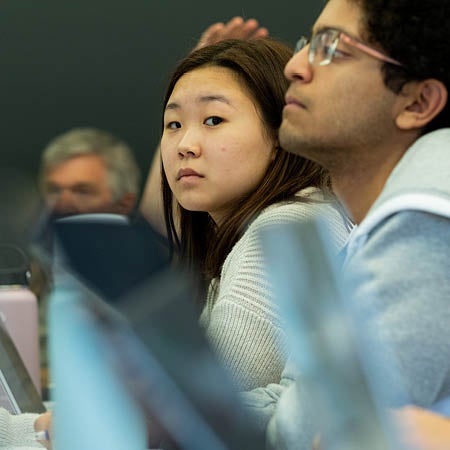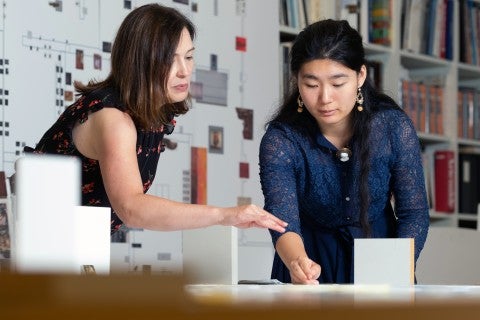
Our faculty and students are globally minded and our research and teaching span millennia, reaching from ancient times to the future. We offer our students numerous opportunities for civic engagement and experiential learning. Our internship and practicum programs help students chart pathways to their future professions.
In our popular Big Questions courses — taught by our most innovative scholars and teachers — we invite Rice students to experience how humanistic and artistic inquiry can help them make sense of the world they inhabit and the daily dilemmas our society faces. Big Questions course subjects vary in their focus, but each class shares a common goal of engaging students in a deep dive into those life-changing questions that we ponder well beyond college and that comprise the core of a liberal arts education: “What is the Ethical Thing to Do?”, “What is Religion?”, “What is Hate?”, “What is the Meaning of Death?” Big Questions courses are some of the university’s most sought-after courses, filling up quickly with eager Owls flocking in from diverse majors and academic backgrounds.
It's never been a better time to study the humanities and the arts at Rice.
Funding for Undergraduate Research
The landmark $100 million gift from the Moody Foundation to Rice provides the naming gift for the Moody Center for Student Life as well as new endowments in support of student programs. The School of Humanities is thrilled this gift includes funding for three signature programs, including the Elizabeth Lee Moody Undergraduate Research Fellowship in the Humanities and the Arts, which provides humanities majors with the tools, resources and opportunities to pursue their research interests. Undergraduate fellows receive at least one summer of funding support for a research project or a humanities-related internship.
Fulfilling a Vision for the Liberal Arts
At its founding, Rice was equally dedicated to the fundamental sciences and the liberal arts. But over the years — during the Great Depression and then in response to postwar pressures — our young university increasingly emphasized scientific and technical training. By the late 1960s, Houston arts icons Dominque and John de Menil at last put the arts at Rice on the map. Through their visionary philanthropy and spirited guidance, they brought a team of art historians, an art library, and a photography and film program to Rice.
Fifty years later, thanks to Fayez Sarofim for his lead gift and all who have contributed to our new building for student arts, we are poised to elevate the place of the humanities and the arts on campus — and fulfill Rice’s vision of a liberal arts education. Our stunning 80,000-square-foot Susan and Fayez Sarofim Hall will foster new forms of art practice and redefine the student arts at Rice, one of our most popular majors enrolling some 800 students each year.

